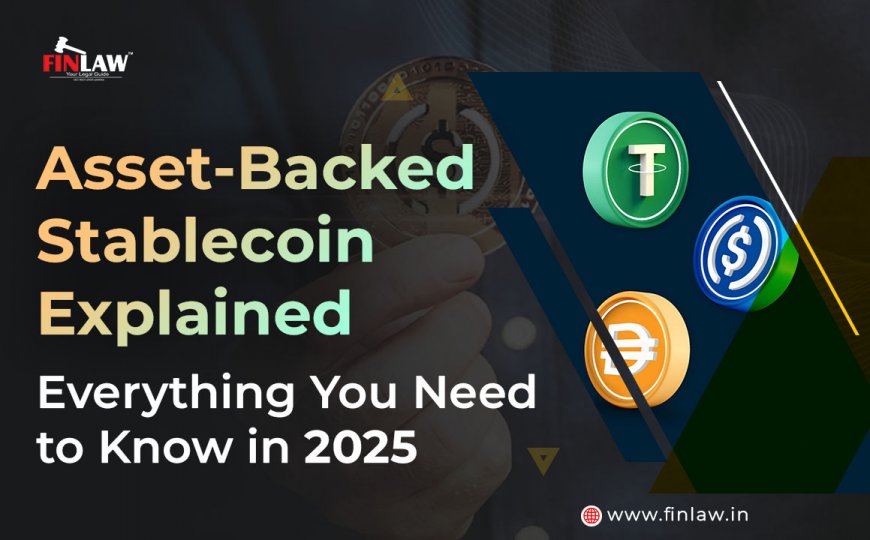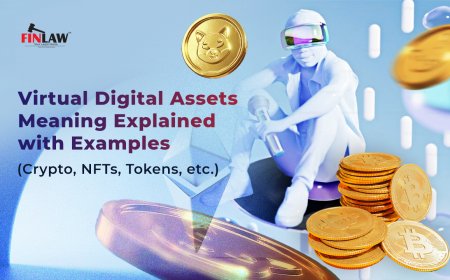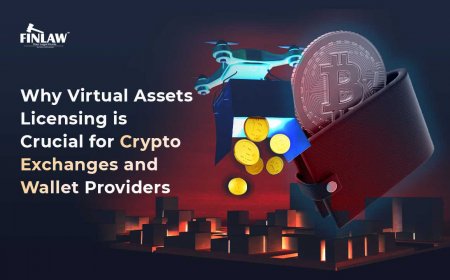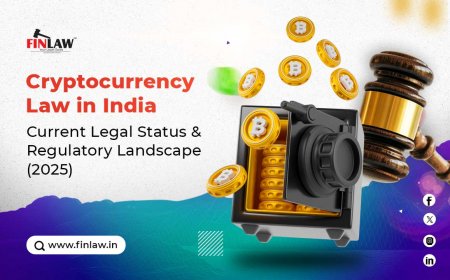Asset-Backed Stablecoin Explained: Everything You Need to Know in 2025
Learn what an asset backed stablecoin is, how it works, and India’s 2025 rules on taxation, regulation, and adoption trends.

Introduction
The year 2025 has seen stablecoins evolve from niche payment instruments to a core pillar of the digital financial system. Among them, the asset backed stablecoin has emerged as the most reliable and widely adopted category.
Unlike algorithmic designs that collapsed in past cycles, asset backed stablecoins derive their value from tangible reserves such as fiat currencies, government bonds, or commodities like gold. This backing not only maintains stability but also fosters trust among users, regulators, and financial institutions.
For Indian investors, businesses, and regulators, understanding asset backed stablecoins is critical. With India continuing to tighten compliance under the Financial Intelligence Unit (FIU-IND) and enforcing taxation rules on Virtual Digital Assets (VDAs), knowing how these stablecoins function—and how they are treated under Indian law—can help in making informed decisions.
What is an Asset Backed Stablecoin?
An asset backed stablecoin is a cryptocurrency pegged to a fixed value through collateral held in reserves. Each token represents a direct claim on underlying assets, ensuring stability in value.
For example:
-
USDC (Circle) maintains parity with the U.S. Dollar through cash and U.S. Treasury bills.
-
PAX Gold (PAXG) represents one fine troy ounce of gold stored in a vault.
Because of this reserve-backing, an asset backed stablecoin provides greater confidence compared to algorithmic or purely crypto-backed models.
Why Asset Backed Stablecoins Matter in 2025
The importance of asset backed stablecoins has grown significantly due to:
-
Institutional adoption: Global banks and fintechs are exploring stablecoin integration for payments and remittances.
-
Cross-border settlements: Indian businesses increasingly use asset backed stablecoins for faster global trade settlements.
-
Regulatory acceptance: With frameworks like MiCA in the EU and the GENIUS Act in the US, asset backed stablecoins are gaining regulatory legitimacy.
-
Hedging inflation: Commodity-backed tokens (especially gold-backed stablecoins) offer protection in inflationary environments.
Types of Asset Backed Stablecoins
1. Fiat-Backed Stablecoins
Backed by fiat money held in bank accounts or short-term government securities.
-
Examples: USDC, USDT, PYUSD.
-
Peg: 1 token = 1 USD (or another fiat currency).
-
Widely used for payments, DeFi, and trading pairs.
2. Commodity-Backed Stablecoins
Collateralized with real commodities such as gold, silver, or oil.
-
Examples: PAXG, Tether Gold (XAUt).
-
Peg: 1 token = fixed quantity of commodity (usually gold).
-
Provides digital access to commodity markets.
3. Hybrid Models
Some issuers experiment with mixed reserves, such as a combination of fiat, bonds, and commodities, to diversify risk.
How Asset Backed Stablecoins Maintain Stability
-
Collateralization – Backed by cash, securities, or commodities.
-
Redemption Rights – Holders can redeem tokens for underlying assets.
-
Arbitrage Mechanisms – Traders restore peg through arbitrage opportunities.
-
Transparency Reports – Issuers publish reserve breakdowns and audits.
This model ensures that asset backed stablecoins rarely lose their peg for long, unlike algorithmic stablecoins that failed in the past.
Asset Backed Stablecoin vs Algorithmic and Crypto-Collateralized Models
|
Feature |
Asset Backed Stablecoin |
Algorithmic Stablecoin |
Crypto-Collateralized Stablecoin |
|
Collateral |
Fiat / Commodities |
None (algorithmic control) |
Crypto assets (ETH, BTC) |
|
Stability |
High (if reserves managed) |
Unstable (high risk of collapse) |
Medium (depends on collateral health) |
|
Transparency |
Reserve reports / audits |
Code-based |
On-chain collateral |
|
Examples |
USDC, PAXG |
Terra (collapsed) |
DAI |
Global Regulatory Landscape in 2025
European Union: MiCA in Force
The Markets in Crypto-Assets Regulation (MiCA) requires stablecoin issuers to maintain capital reserves, publish whitepapers, and undergo regular audits. Asset backed stablecoins classified as e-money tokens (EMTs) must comply fully by 2025.
United States: GENIUS Act
The GENIUS Act of 2024–25 introduces federal oversight for payment stablecoins, requiring issuers to obtain licenses, hold reserves, and follow AML rules.
Asia-Pacific Trends
Singapore, Hong Kong, and Japan have also established licensing frameworks for stablecoin issuers, signaling global convergence toward stricter rules.
India’s Approach to Asset Backed Stablecoins
1. Legal Classification
In India, asset backed stablecoins are treated as Virtual Digital Assets (VDAs) under the Income Tax Act.
2. Tax Rules
-
30% flat tax on profits from transfer of stablecoins.
-
1% TDS on transactions above specified thresholds.
-
No set-off of VDA losses.
3. Compliance Requirements
-
Exchanges and businesses dealing in stablecoins must register with FIU-IND.
-
KYC and travel rule compliance are mandatory.
4. RBI’s Stance
The Reserve Bank of India (RBI) has consistently expressed concerns about stablecoins undermining monetary sovereignty. However, India has not imposed a direct ban, focusing instead on taxation and AML compliance.
Key Asset Backed Stablecoins in 2025
USDC (Circle)
-
Reserves: U.S. Treasuries and cash.
-
Transparency: Monthly attestations, frequent reserve reports.
-
Adoption: Growing in global institutional finance.
USDT (Tether)
-
Reserves: Mix of cash, T-bills, and other assets.
-
Liquidity: Largest by market capitalization, widely used in India for crypto trading.
-
Risks: Criticized for limited disclosures in the past.
PAX Gold (PAXG)
-
Reserves: Gold stored in London vaults.
-
Peg: 1 token = 1 fine troy ounce of gold.
-
Redemption: Physical redemption available (minimum thresholds apply).
Benefits of Asset Backed Stablecoins
-
Stable Value: Pegged to fiat or commodities.
-
Efficient Payments: Useful for cross-border remittances and settlements.
-
Hedging Tool: Gold-backed tokens help protect against currency depreciation.
-
DeFi Integration: Widely used in lending, borrowing, and yield farming protocols.
-
Global Acceptance: Increasingly recognized by institutions and regulators.
Risks and Limitations
-
Custodial Risks: Users depend on issuers and custodians.
-
Regulatory Risks: Changing rules can impact accessibility.
-
Transparency Gaps: Not all issuers provide full audits.
-
Tax Burden in India: High tax rates (30% + 1% TDS) reduce investor returns.
Use Cases of Asset Backed Stablecoins in India
-
Cross-Border Trade: Import-export businesses use USDT/USDC to settle invoices faster than traditional banking channels.
-
Wealth Management: Investors use gold-backed stablecoins like PAXG for digital gold exposure.
-
DeFi Platforms: Indian traders access lending protocols with asset backed stablecoins as collateral.
-
Remittances: Overseas Indians send money home using stablecoins, which are then converted to INR on local exchanges.
Future Outlook of Asset Backed Stablecoins in India
-
Policy Evolution: The Indian government is considering rationalizing the 1% TDS rule, which may boost adoption.
-
Integration with CBDC: The Digital Rupee may eventually coexist with private stablecoins in India’s digital payment ecosystem.
-
Institutional Adoption: Banks and NBFCs could integrate asset backed stablecoins for faster settlements once regulatory clarity improves.
How to Choose the Right Asset Backed Stablecoin
When selecting an asset backed stablecoin, investors and businesses should evaluate:
-
Reserve Composition (fiat, gold, government securities).
-
Transparency of Disclosures (attestations vs full audits).
-
Liquidity in Indian Markets (availability on FIU-registered exchanges).
-
Regulatory Compliance (issuer’s alignment with MiCA/US rules).
-
Redemption Mechanisms (ease of converting back to fiat/commodities).
Conclusion
In 2025, asset backed stablecoins have become the preferred form of stable digital money worldwide. Backed by real assets, they offer a unique combination of stability, transparency, and utility that algorithmic and crypto-only models cannot match.
For India, the challenge lies in balancing innovation with compliance. While taxation and FIU oversight create hurdles, the opportunities for businesses and investors remain significant. With global regulations tightening and institutional adoption rising, asset backed stablecoins are likely to play a crucial role in India’s financial ecosystem in the years ahead.
What's Your Reaction?



















